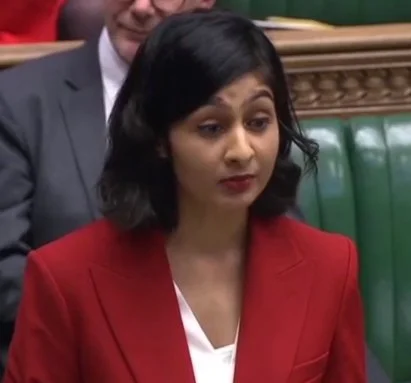From Cool Britannia to Cold Nationalism:
The Psychological and Political Journey of the Union Jack
In February 1997, Geri Halliwell, better known as Ginger Spice, stepped onto the stage at the BRIT Awards wearing a short black Gucci dress that she had transformed by stitching a Union Jack tea towel over it. The moment became one of the defining images of 1990s Britain. Halliwell’s dress was playful, irreverent and patriotic all at once. It symbolised a nation that felt confident, self-aware, and ready to project itself onto the world stage through culture, fashion, and music. The Union Jack was not just a flag. It was an accessory of cool, part of what journalists called the “Cool Britannia” era.
Nearly three decades later, the same flag is flying across British towns and cities for very different reasons. It appears on lampposts, overpasses, and at anti-immigration protests. What once represented confidence and creativity now often signals division, anger, and exclusion. The Union Jack has not changed in colour or design, yet its meaning has been transformed. This shift reveals profound psychological and political currents running through contemporary Britain.
The Psychology of Symbols: From Belonging to Threat
Human beings are deeply responsive to symbols. They allow people to feel part of something larger than themselves and to locate their identity within a shared story. Psychologists such as Henri Tajfel and John Turner, in their theory of social identity, argued that individuals derive self-esteem from the groups they belong to. Symbols such as flags or anthems become emotional anchors that reinforce that sense of belonging.
In the late 1990s, the “we” represented by Geri Halliwell’s flag dress was open and inviting. It was a version of Britishness that included difference, irony, and joy. The Spice Girls, with their diverse personalities and accessible feminism, represented a generation that felt it could reimagine British identity without fear or nostalgia. The flag, in that context, communicated pride without hostility. It celebrated national identity as a form of creative expression rather than a political boundary.
In contrast, when people experience economic uncertainty, cultural change, or political alienation, the same symbols can trigger defensive emotions. The psychological mechanism flips from inclusion to exclusion. Instead of affirming who belongs, the flag becomes a warning about who does not. The modern use of national flags at anti-immigration rallies, or during “Operation Raise the Colours,” reflects this reversal. Pride has become defensive rather than celebratory. The symbol that once expressed confidence now serves as a shield against perceived threats.
Politics and the Erosion of Soft Power
The Cool Britannia period coincided with a moment when Britain felt newly relevant and globally engaged. The rise of Britpop, the success of British cinema, and the optimism of the early Blair years projected a form of national pride rooted in creativity and openness. The Union Jack appeared on fashion items, taxis, and record covers because it symbolised a Britain that was both traditional and modern.
The subsequent decades have been marked by the erosion of that optimism. Economic inequality, deindustrialisation, austerity, and the aftershocks of Brexit have reshaped how many Britons feel about their place in the world. The sociologist Benedict Anderson described nations as “imagined communities,” sustained not by geography but by shared imagination. When that imagination falters, the symbols of nationhood often become rigid and anxious. The flag, which once symbolised a confident projection of identity, now marks a defensive retreat into nostalgia.
In this political climate, movements that promote flag displays as expressions of patriotism often tap into feelings of loss. Hanging a flag on a lamppost is not merely an act of civic pride. It becomes a statement about territory and ownership. Where Geri Halliwell’s flag dress spoke of belonging to something expansive, the modern use of flags often asserts control over something shrinking. The political meaning of the symbol has contracted along with the optimism that once animated it.
The Gendered Transformation of National Pride
The transformation of the flag’s symbolism also carries a gendered dimension. When Geri Halliwell wore the Union Jack, she reclaimed a national emblem through a feminine lens. Her performance was confident and humorous, a declaration that British identity could be glamorous and self-possessed. It challenged the idea that patriotism was the preserve of men in suits or uniforms. The gesture was not submissive to tradition but rather subversive of it.
Today, by contrast, the most visible expressions of flag-based nationalism are often male-dominated and aggressive. The imagery of shirtless men shouting beneath banners of St. George represents a form of masculinity that equates nationalism with control and confrontation. Social psychologists describe this as a shift from self-expression to status assertion. The flag is no longer an accessory of identity but a symbol of dominance. The psychological roots of this transformation lie in perceived status loss. When groups feel their social standing is threatened, they often retreat into rigid forms of identity as a means of restoring self-worth.
Thus, the flag that once adorned a pop icon’s dress as a playful assertion of empowerment now flies in a context defined by insecurity. It has moved from a symbol of creative power to one of defensive posture.
The Politics of Memory and Nostalgia
Much of contemporary nationalism operates through nostalgia. The longing for a simpler, prouder past often fills the void left by uncertainty in the present. Political theorists have described this as “restorative nostalgia,” the desire not simply to remember the past but to rebuild it. The flag, in this framework, becomes a tool of temporal control. It is used to evoke a time when national identity seemed stable, when “Britishness” carried a clear definition.
The problem, however, is that this nostalgia is selective. It erases the diversity and dynamism that have always characterised Britain. The 1990s celebration of the Union Jack was not naïve to the country’s problems, but it refused to define identity through fear. It drew strength from cultural exchange, immigration, and self-parody. Today’s flag politics often exclude those same sources of vitality. In psychological terms, one might say that Britain has shifted from a “growth mindset” version of patriotism to a “fixed mindset” one: from curiosity to defensiveness, from creativity to protectionism.
Simply Put: The Flag as Mirror
The Union Jack has not changed in design, yet it reflects the emotional state of the nation that displays it. When Britain felt confident, outward-looking, and proud of its creativity, the flag appeared on pop stars and designer handbags. It was ironic and exuberant, a visual shorthand for cultural vitality. When Britain feels uncertain, divided, and nostalgic, the same flag hardens into a warning. It marks territory rather than belonging.
Geri Halliwell’s dress captured a form of patriotism that was performative, inclusive, and full of self-belief. It said, “We can love where we are from without hating anyone else.” The modern use of the flag at nationalist rallies says something very different: “We are defending what is ours from what is not.” The contrast illustrates a deeper psychological truth. Symbols gain their meaning not from colour or shape but from emotion and intention.
If the flag once represented a confident nation dancing on the world stage, it now too often represents one looking nervously over its shoulder. The challenge for Britain is not to abandon its symbols, but to rediscover the spirit that made them joyful in the first place. A flag can either mark boundaries or celebrate belonging. The story of the Union Jack shows how easily one can turn into the other.
References
Robinson, W. I. (2014). Global capitalism and the crisis of humanity. Cambridge University Press.
The Guardian. (2025, September 13). Far-right London rally sees record crowds and violent clashes.










